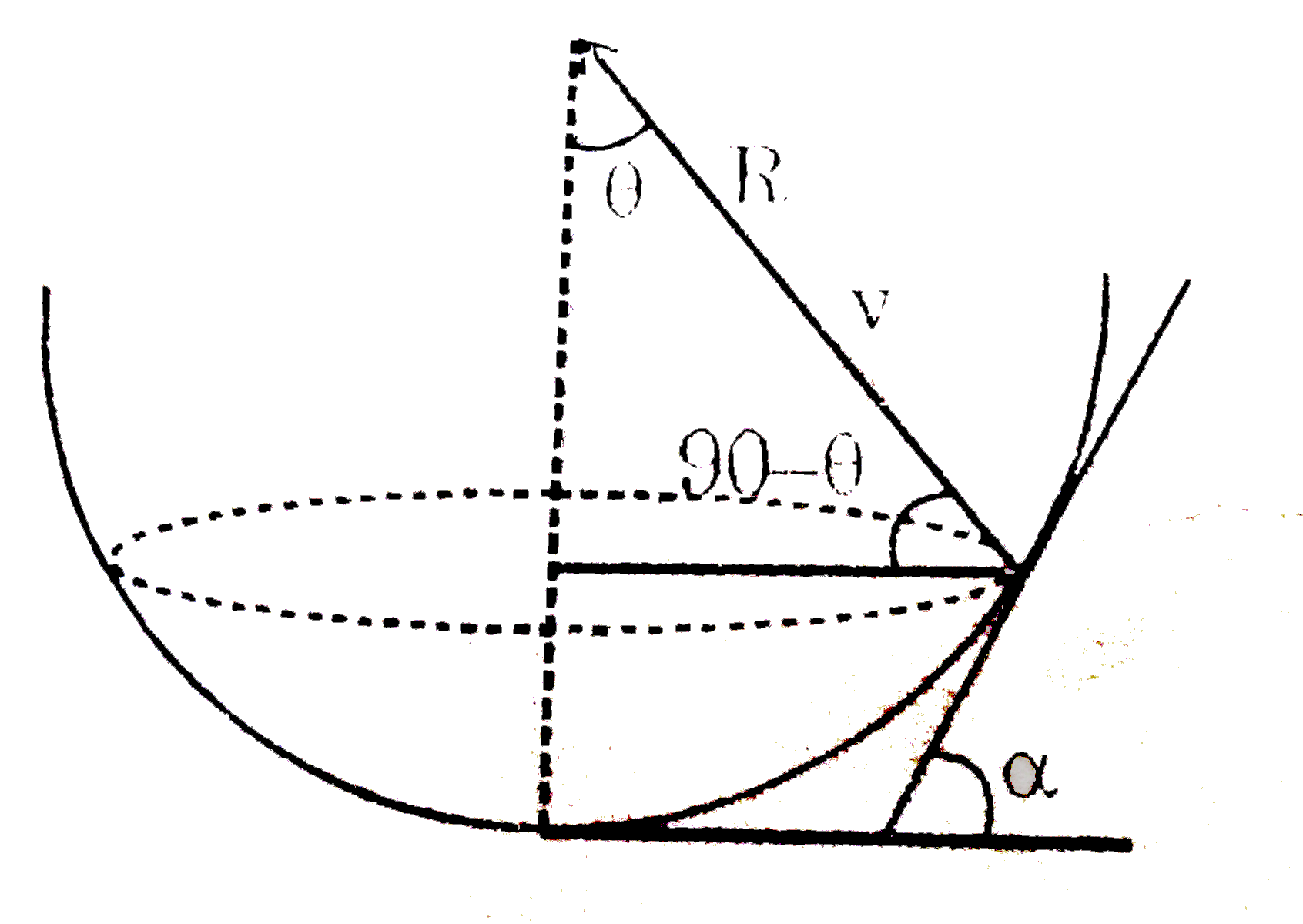A small marble of mass m moves in a circular orbit very close to the bottom of a circular bowl. Assume that the marble can only move in orbits whose angular momentum is L=nh2π where h is plank constant.

a.The allowed radius of the circular orbit is proportionsl to n(3/2)
b. The allowed speed is proportional to n(1/2)
c, Taking gravitional potential energy at bottom to be zero, the allowed energy is given by nh2π√gR
d.Gravotational potential energy and kinetic energy in any allowed state are equal (taking reference at bottom.)
The correct Answer is:B, C, D
Ncosθ=mg
Nsinθ=mv2x

tanθ=v2gx=v2gRsinθ
mvx=nh2π
mv×Rsinθ=nh2π
m√gRsin2θcosθRsinθ=nh2π
m√gR3sin2θ√cosθ=nh2π
cosθ≈1
m√gR3×x2R2=nh2π
x=
⎷nh2πm√Rg
v∝√n
v=√nh√2π√m×
⎷nh2πm√Rg=√nh2πm√gR
E=mgh+12mv2
mg(R−Rcosθ)+12m×nh2πm√gR
12mgR×x2R2+12nh4π√gR
mg2R×nh2πm√Rg+nh4π√gR
E=nh2π√gR
Topper's Solved these Questions
- TEST PAPERSBOOK - ALLENCHAPTER - TEST PAPERSEXERCISE - part-2 physics
71 Videos
- TEST PAPERSBOOK - ALLENCHAPTER - TEST PAPERSEXERCISE - part-2 physic
48 Videos
- TEST PAPERSBOOK - ALLENCHAPTER - TEST PAPERSEXERCISE - PAPER 3
99 Videos
- TEST PAPER 4BOOK - ALLENCHAPTER - TEST PAPER 4EXERCISE - PHYSICS
44 Videos
- UNIT & DIMENSIONS, BASIC MATHS AND VECTOR BOOK - ALLENCHAPTER - UNIT & DIMENSIONS, BASIC MATHS AND VECTOR EXERCISE - Exercise (J-A)
7 Videos
Similar Questions
A particle of charge 'q' and mass 'm' move in a circular orbit of radius 'r' with frequency 'v' the ratio of the magnetic moment to angular momentum is:
View SolutionA particle of charge q and mass m moves in a circular orbit or radius r with angular speed ω. The ratio of the magnitude of its magnetic moment to that of its angular momentum depends on
View Solution
Knowledge Check
A satellite of mass m moves around the Earth in a circular orbit with speed v. The potential energy of the satellite is
Amv2B−mv2C32mv2D−32mv2A particle of charge 'q' and mass 'm' move in a circular orbit of radius 'r' with frequency 'v' the ratio of the magnetic moment to angular momentum is:
A2qvmBqv2mCq2mrDq2mA particle of charge q and mass m moves in a circular orbit of radius r with angular speed w the ratio of the magnitude of its magnetic moment to that of its angular momentum depends on
Aw and qBw, q and mCq and mDw and m
A particle of charge q and mass m moves in a circular orbit of radius r with angular speed ω. The ratio of the magnitude of its magnetic moment to that of its angular momentum depends on
View SolutionA particle of charge q and mass m moves in a circular orbit of radius r with angular speed ω. The ratio of the magnitude of its magnetic moment to that of its angular momentum depends on
View SolutionA satellite of mass M revolving in a circular orbit of radius rs around the earth of mass M has a total energy E. then, its angular momentum will be
View SolutionA particle of charge q and mass m moves in a circular orbit of radius r with angular speed ω. The ratio of the magnitude of its magnetic moment to that of its angular momentum depends on
View SolutionA particle of charge q and mass m moves in a circular orbit of radius r with angular speed ω. The ratio of the magnitude of its magnetic moment to that of its angular momentum depends on
View Solution
